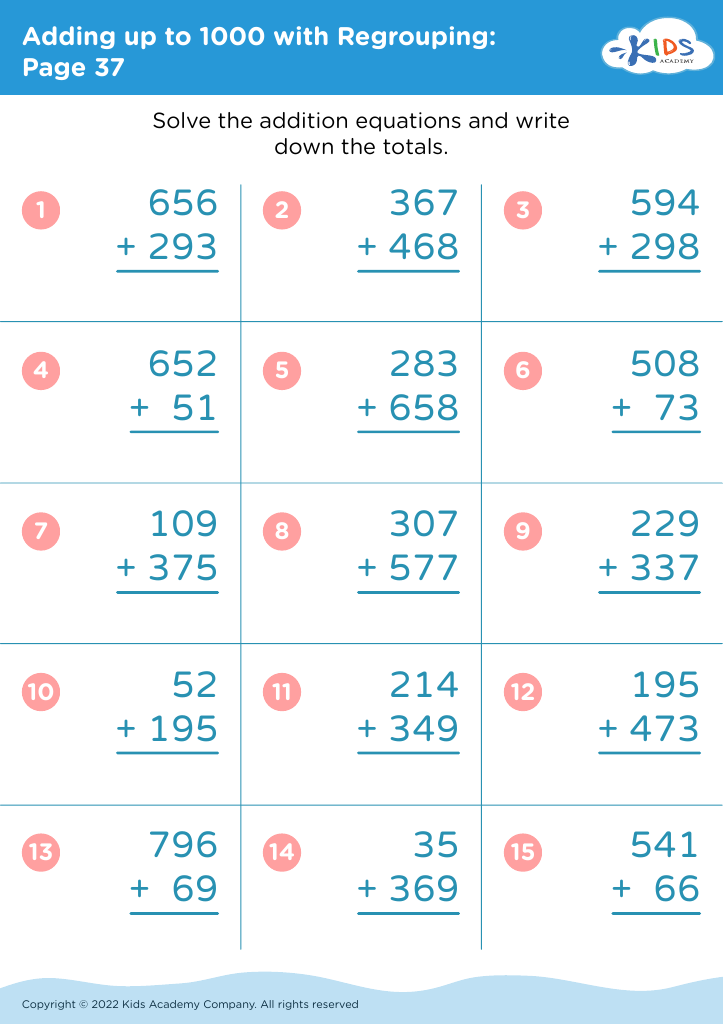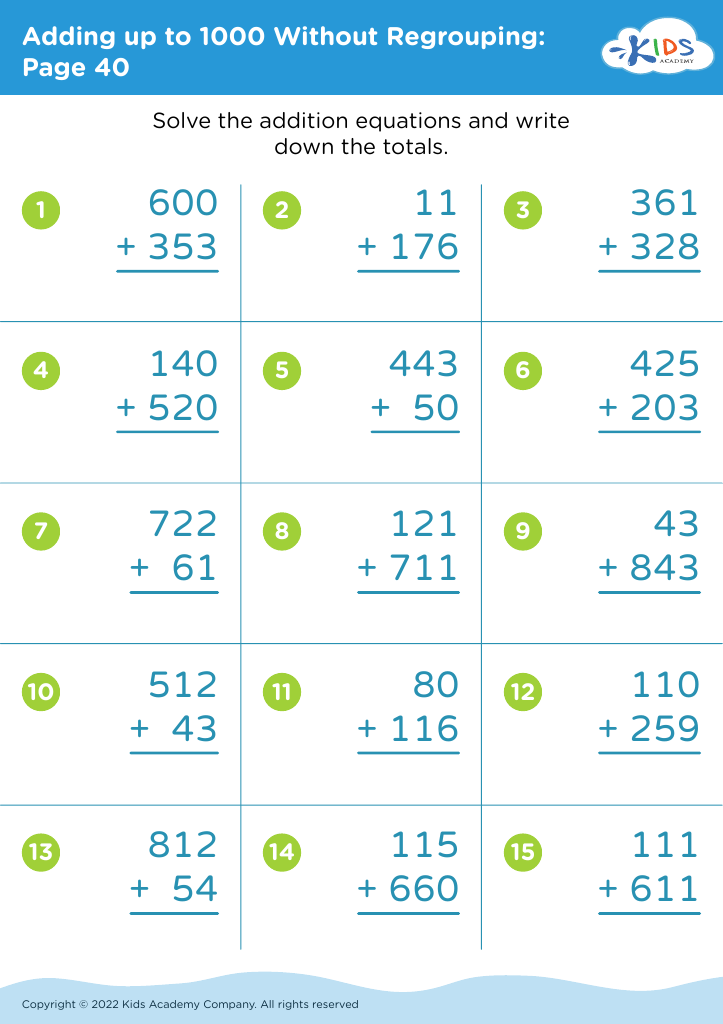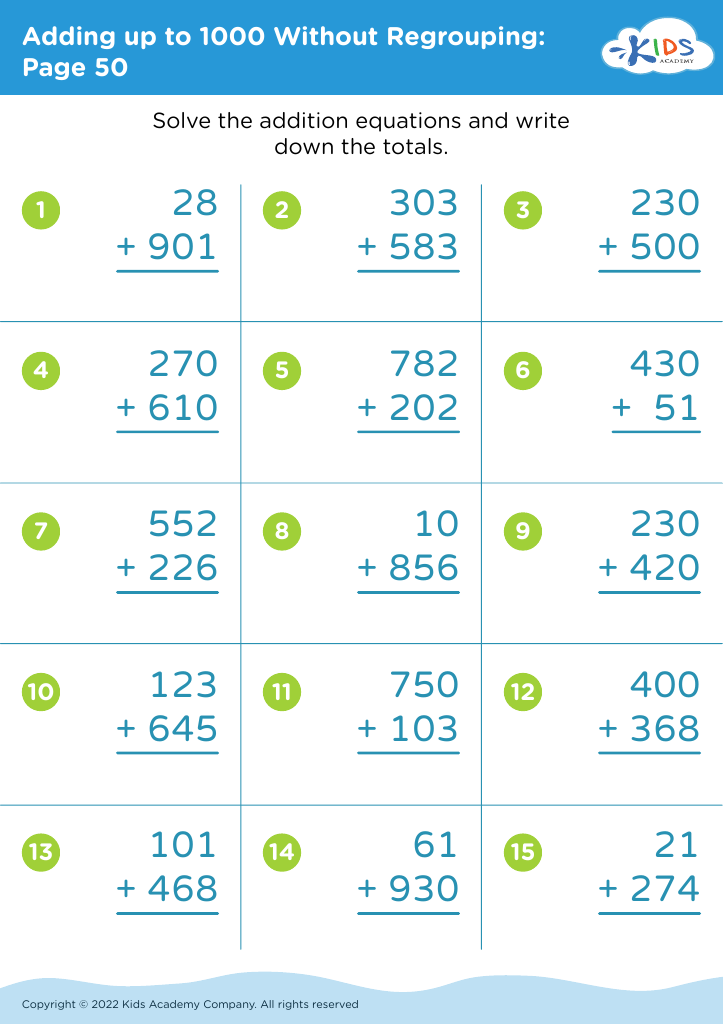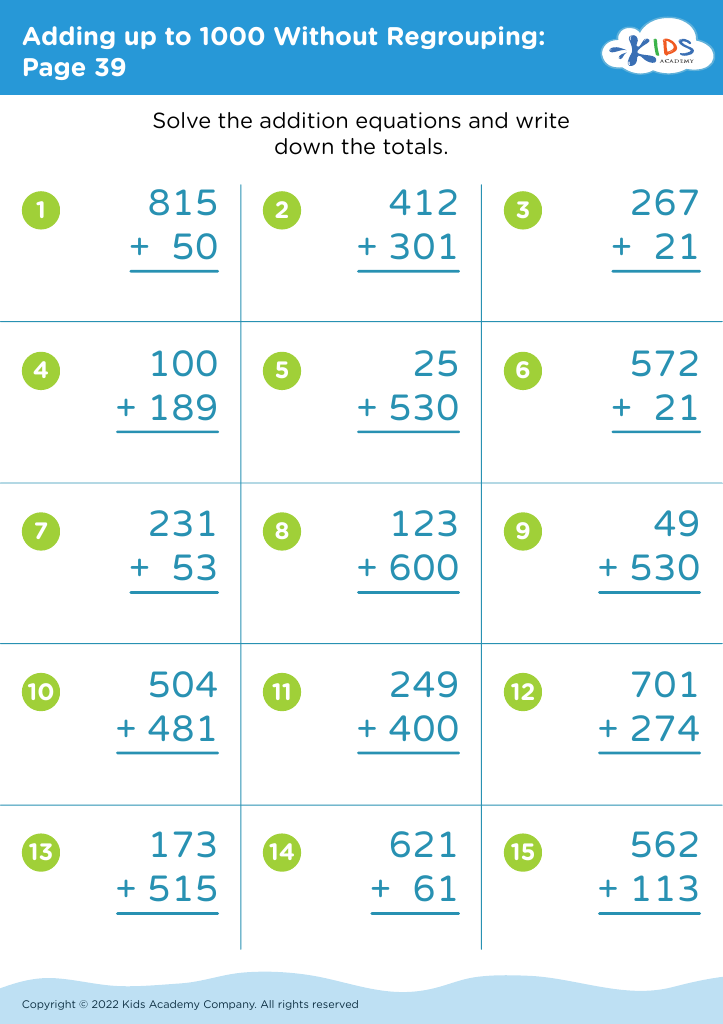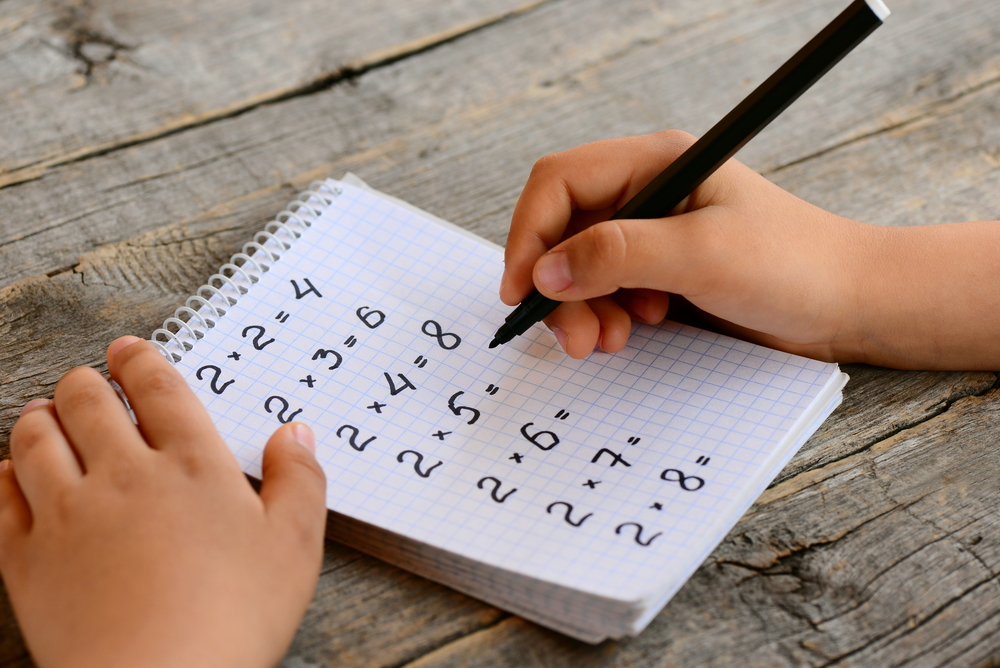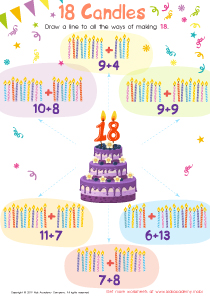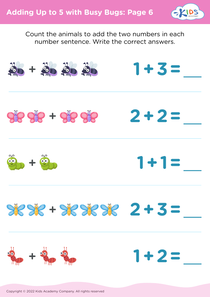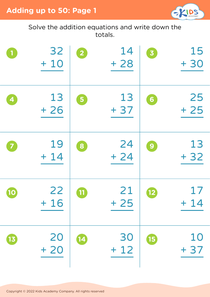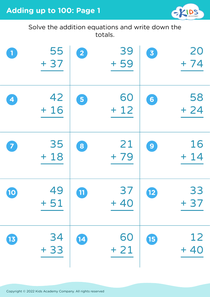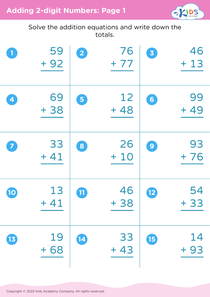Alphabet Recognition Adding up to 1000 Worksheets for Ages 3-8
4 filtered results
-
From - To
Discover our engaging "Alphabet Recognition Adding up to 1000 Worksheets for Ages 3-8" designed to make learning fun and educational! These worksheets combine math and literacy skills, helping children understand numbers up to 1000 while recognizing letters of the alphabet. Ideal for teachers and parents, our activities include colorful illustrations and interactive exercises to keep young learners captivated. Tailored for ages 3-8, these printable resources support early childhood development, enhancing counting, addition, and foundational reading abilities. Give your child a head start and foster a love for learning with our innovative worksheets!
Alphabet recognition is a fundamental skill essential for early literacy, and understanding concepts of addition up to 1000 offers substantial cognitive benefits. Parents and teachers should care about this combined skill set for several developmental reasons.
Broadening alphabet recognition aids in phonemic awareness, sparking the initial steps toward reading fluency. At ages 3-8, children are at a prime stage to absorb and familiarize themselves with letters, building the foundation for subsequent reading and writing proficiency. It's much like learning the ABCs but demonstrates how letters and early math concepts apply at higher levels.
Adding up to 1000 introduces key numeracy skills needed for real-world math application. Concepts such as place value, number sense, and arithmetic confidence grow from practicing addition. Understandably, equipping children with strong number skills early on correlates with their later success in more complex math.
Combining alphabet learning with addition not only diversifies cognitive challenges—it also promotes critical thinking and problem-solving abilities. It reflects a more integrated education approach, where literacy and numeracy grow hand-in-hand, fostering well-rounded intellectual development. Engaging in activities like this furthers holistic learning, ensuring children gain both verbal and numerical literacy and setting a solid foundation for their overall educational journey.

